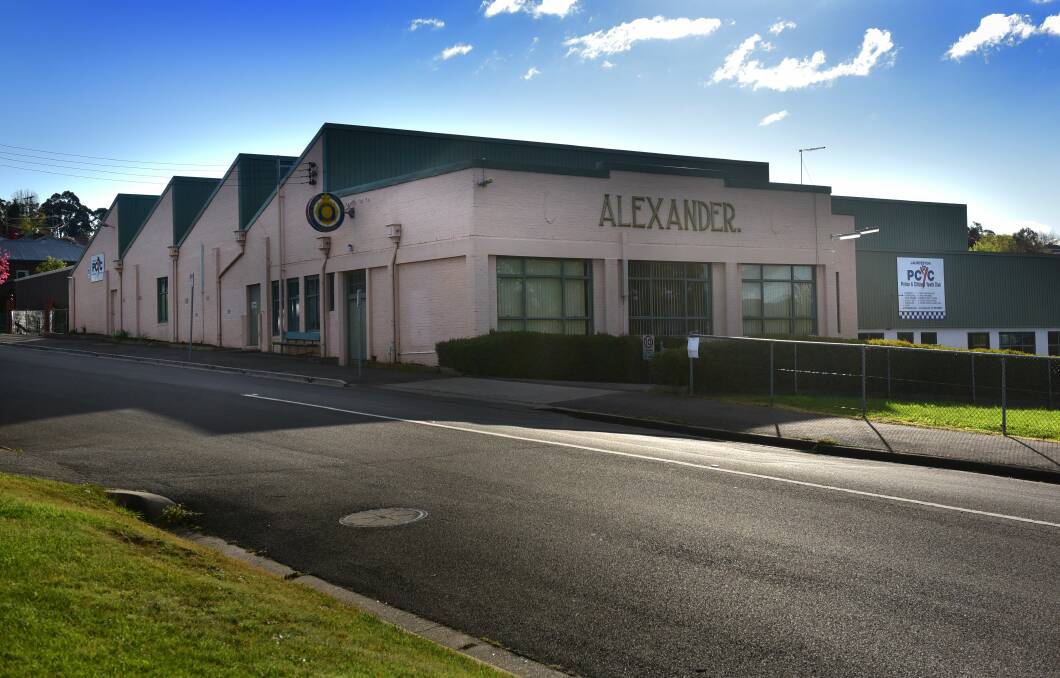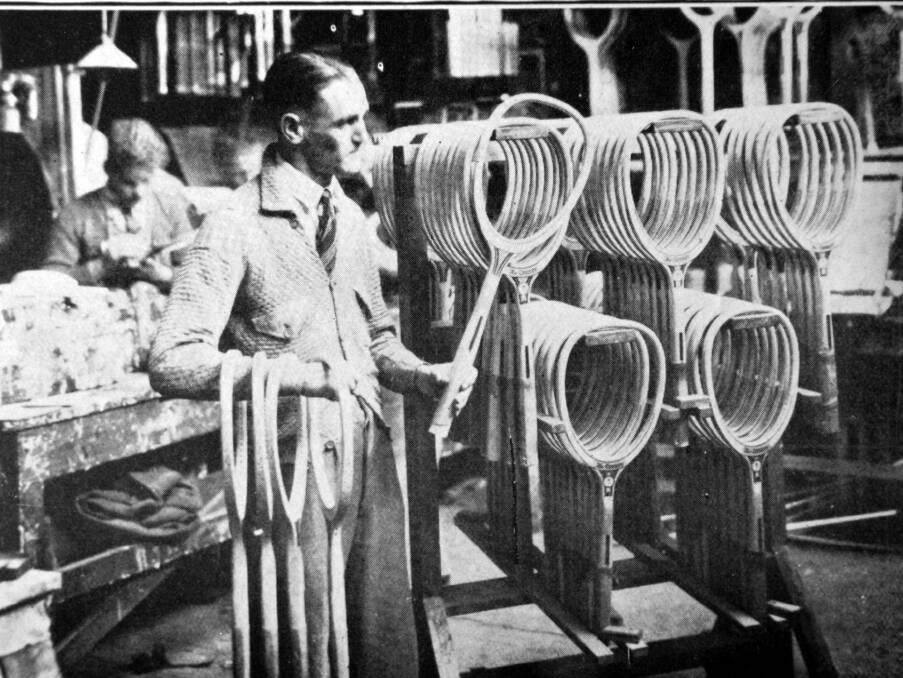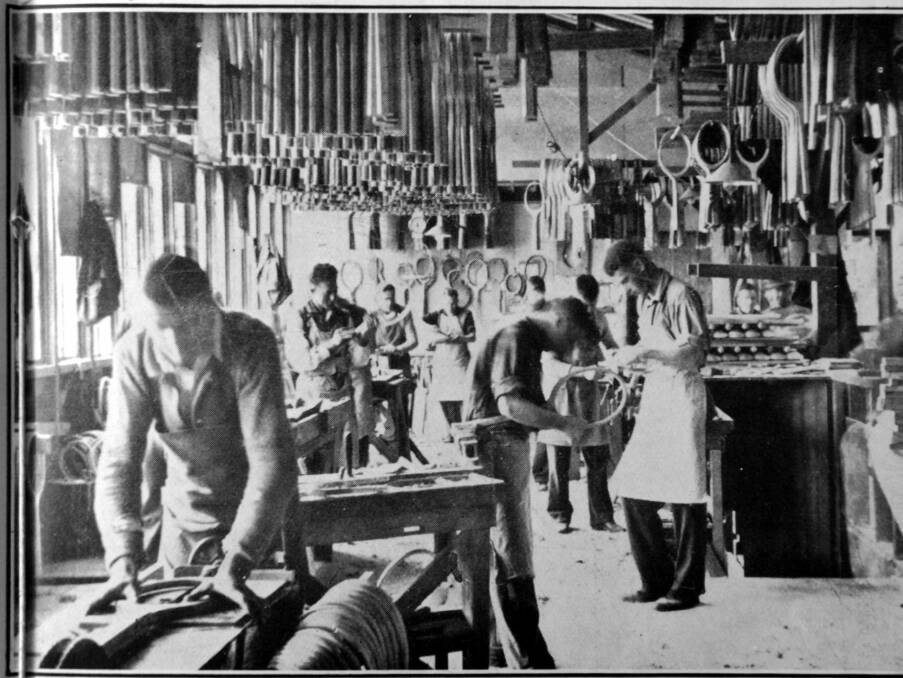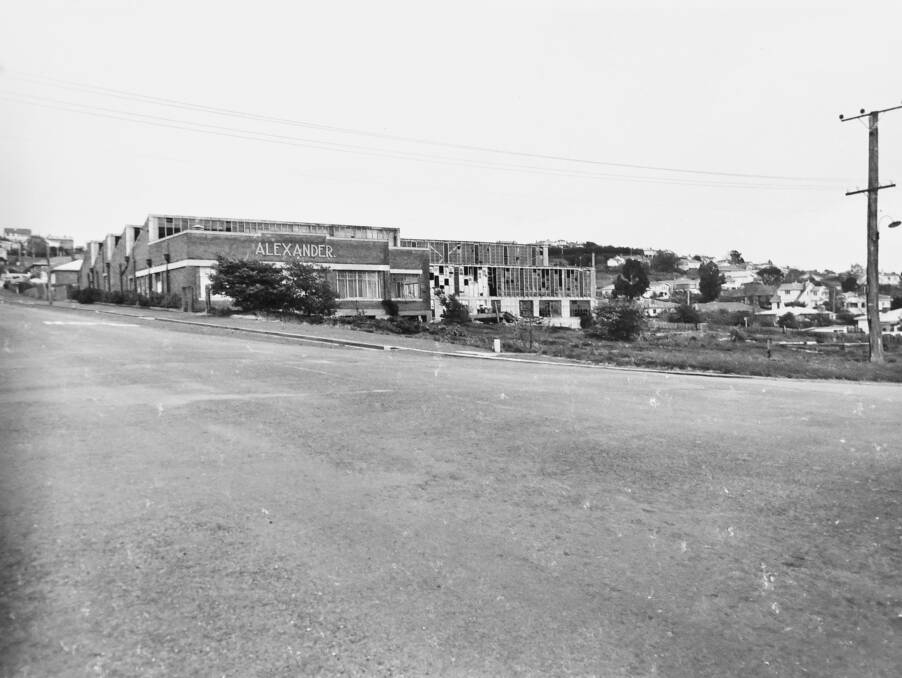
Today the building on the corner of Wentworth and Abbott streets in Newstead is known to most as the PCYC centre.
Subscribe now for unlimited access.
$0/
(min cost $0)
or signup to continue reading
But its history forms the threads of Tasmania’s sporting legacy.
The Alexander Patent Racket Co. factory was built in 1926.
It was headed by Alfred Alexander Junior, with support from the likes of state tennis champions W.J. “Bill” Sheehan.
In 1926 the company began producing its patented laminated tennis racquet, the first in the world. Prior to this, racquets were solid bent wood and imported from France.

Racquets created in the Launceston factory were exported across the world, from the standard US and China, to countries like India and parts of Africa.
They went on to be held in the hands of tennis greats like Neale Fraser, Don Turnbull, and Jack Crawford, who showcased their worth and quality.
There were many models produced by the company, but the one with the most longevity was the ‘Cressy’, most likely named after the Northern Midlands township.
It also produced and exported other sporting goods, like golf clubs, cricket bats, hockey sticks, and badminton and squash racquets.
Tennis underwent a revival after world war one, and the demand for racquets skyrocketed. The Alexander Patent Racket Co. rode this boom to success, helping Launceston whether the Great Depression in the 1920’s and 30’s.
In the 1930s, the Alexander Racket factory was at its peak, employing almost 200 people.
Just four years after starting production the factory had made more than 60,000 tennis racquets and in its heyday more than 400 were made each day.

The imported English ash for the racquets was planted and grown at Hollybank, in between Launceston and Lilydale.
However, the plantation didn’t take quite as well as planned, and was abandoned in 1946.
Some of the wood used in their products was still sourced locally, however. Willow harvested from the North Esk River was used by the company to make cricket bats.

After starting with a meagre £10,000 capital, hitting great heights in 30’s the company began to founder in the mid-1950’s.
It was finally deregistered in 1958 and went into liquidation in 1961.
That marked the end of the company’s 35 year history in the building, from 1926 to 1961.
It took on it’s second life as the home of the Launceston PCYC in 1968.


